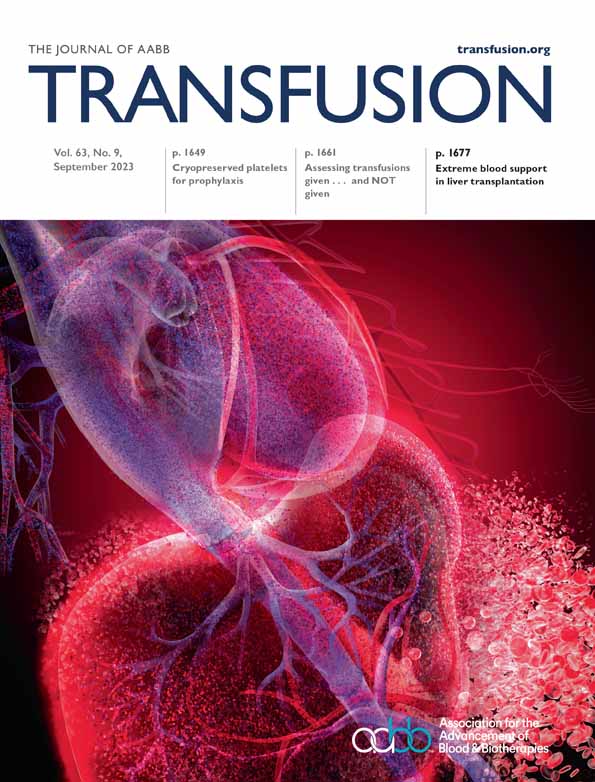A randomized cross-over study of cryopreserved platelets in prophylactic transfusions of thrombocytopenic patients
Abstract
Background
The short shelf-life of liquid-stored platelets (LP) at 20–24°C poses shortage and wastage challenges. Cryopreserved platelets have significantly extended shelf-life, and were safe and efficacious for therapeutic transfusions of bleeding patients in the Afghanistan conflict and phase 2 randomized studies. Although hematology patients account for half of platelets demand, there is no randomized study on prophylactic cryopreserved platelet transfusions in them.
Methods
We performed a phase 1b/2a randomized cross-over study comparing the safety and efficacy of cryopreserved buffy coat-derived pooled platelets (CP) to LP in the prophylactic transfusions of thrombocytopenic hematology patients.
Results
A total of 18 adults were randomly assigned 1:1 to CP and LP for their first thrombocytopenic period (TP) of up to 28-days. A total of 14 crossed over to the other platelet-arm for the second TP. Overall, 17 subjects received 51 CP and 15 received 52 LP. CP-arm had more treatment emergent adverse event (29.4% vs. 13.3% of subjects, 9.8% vs. 3.8% of transfusions) than LP-arm but all were mild. No thromboembolism was observed. Both arms had similar bleeding rates (23.5% vs. 26.7% of subjects) which were all mild. Subjects in CP-arm had lower average corrected count increments than LP-arm (mean [SD] 5.6 [4.20] vs. 22.6 [9.68] ×109/L at 1–4 h, p < .001; 5.3 [4.84] vs. 18.2 [9.52] ×109/L at 18–30 h, p < .001). All TEG parameters at 1–4 h and maximum amplitude (MA) at 18–30 h improved from baseline post-CP transfusion (p < .05) though improvements in K-time and MA were lower than LP (p < .05).
Discussion
During shortages, CP may supplement LP in prophylactic transfusions of thrombocytopenic patients.
CONFLICT OF INTEREST STATEMENT
The authors have disclosed no conflicts of interest.




